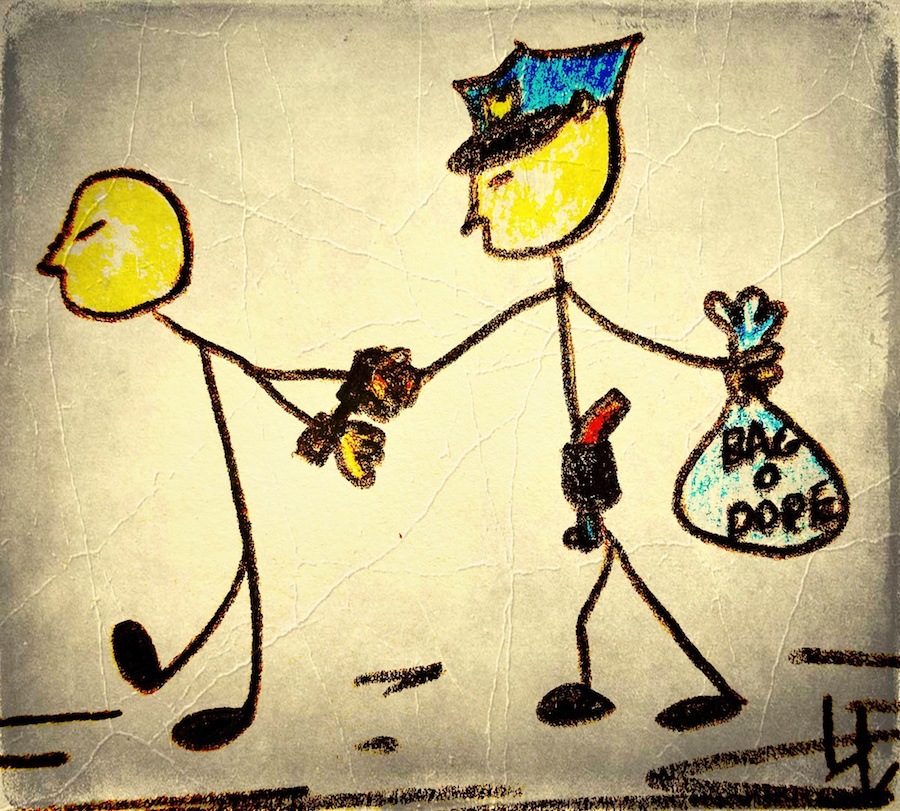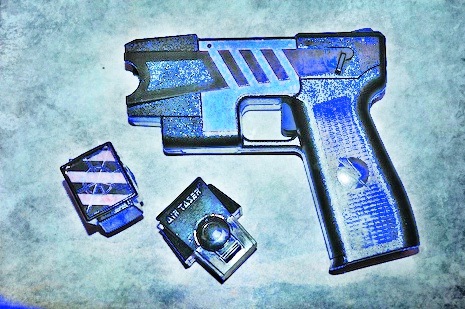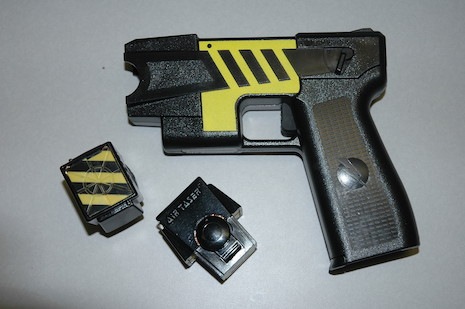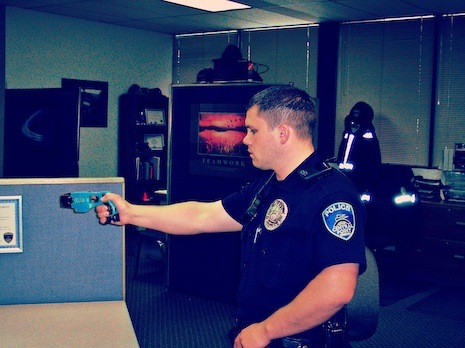You’ve all heard police officers chattering away on their police radios, on news reports, and while arresting Ray Buck Jenkins, the town drunk. And when they do they use their own special form of communication, the sometimes brain-jarring language called “cop-speak.” But when they’re conversing with their own kind inside the privacy of police station gyms and patrol cars, their lingo and terminology becomes even more bizarre, such as …
U-Boat: an unmarked police car.
Under-Belt: The belt that holds up an officer’s pants, just like the belts worn by citizens (through the belt loops). The duty belt is attached to the under-belt using belt keepers.
Un-Sub: an unidentified subject. Other terms include, suspect, actor, perpetrator, and a**hole.
Weekend Holiday/Getaway: When arrest warrants are served on Friday afternoons, after courts close, there’s no one around to conduct bond hearings. Therefore, offenders typically must remain in jail until the following Monday when judges and court employees return to work.
It’s an unofficial favorite tactic of some law enforcement officials to purposely serve arrest warrants after the close of the Friday business day to make certain that, instead of partying, the subjects spend the entire weekend behind bars. And, to add insult to injury, doing so on the Friday afternoon of a holiday weekend means the person will sit in a cell until the following Tuesday. It’s sometimes a tool that’s used to keep people “on ice” and out of the way while police continue an investigation. Feds love this tactic. *Also known as a Holiday Weekend.
Weeney-wagger: a male subject who exposes his “bits and bobs” in public.
Whale: a black and white unmarked car. Some say they resemble killer whales. To me they look like unfinished patrol cars.
Whiskey-Tango: White trash.
Sorry to offend, Cousin Junior, Jr., but that’s what it means, behind the scenes.
Whiskey Tango Foxtrot/William Tom Frank: WTF
Wobbler: a case initially charged as a felony but is later reduced to a misdemeanor by a lenient prosecutor. Or, a felony offense that’s reduced as part of a plea agreement.
Working the Bubble: a street cop who’s on temporary desk duty, such as behind the bulletproof glass separating the precinct lobby from the interior of the station.
Yankee 9er: former soldier turned cop who refuses to let go of military-speak, especially so when transmitting over police radio air waves. “Incoming! Incoming! We’re taking rounds from male subject. Sounds like he’s firing a fitty. This is a real soup sandwich, sir! A Charlie Foxtrot!”
Translation – “Somebody’s shooting at me with a bunch of bullets. Yep, I’m in a real jam. Send backup, please.”
- Fitty: M2 .50 caliber machine gun
- Soup Sandwich: an assignment that’s gone absolutely wrong.
- Charlie Foxtrot: a real “cluster ****”

Phonetic Alphabet
Listed below are common uses of the phonetic alphabet, both by members of the military and by police officers. Of course, they’re interchangeable, but officers without military background may say, well, anything.
(Black text for military and blue for non-military/police).
A – Alfa (or Alpha)
Cops without a military background may use Apple, or Adam
B – Bravo
Cops – Boy
C – Charlie
D – Delta
Cops – David
E – Echo
F – Foxtrot
Cops – Frank
G – Golf
H – Hotel
I – India
Cops – Ida
J – Juliett
Cops – John
K – Kilo
L – Lima
Cops – Lincoln
M – Mike
Cops – Mary
N – November
Cops – Nora
O – Oscar
P – Papa
Cops – Paul
Q – Quebec
R – Romeo
S – Sierra
Cops – Sam
T – Tango
Cops – Tom
U – Uniform
V – Victor
W – Whiskey
Cop – William
X – X-ray
Y – Yankee
Z – Zulu

Yard Bird: fast food chicken. Also, a suspect who hides in the bushes or behind outbuildings, but suddenly makes a run for it as searching officers come close. FYI – Yard birds have been know to enjoy a meal of yard bird. Actually, some yard birds like to listen to The Yardbirds while eating yard bird.
Zebra: a term with a variety of meanings, such as the sergeant who wears three stripes on their sleeves. A cocky and boisterous sergeant may also known as “an ass with stripes.” Or, the term used by street crooks to describe a black and white patrol vehicle. “Here comes the Po-Po, driving a new zebra.”
Zip Gun: a crude, homemade firearm that is sometimes designed to use ground match heads as a propellant and fires projectiles such as broken glass, bits of metal, small nails, etc.
The Yardbirds


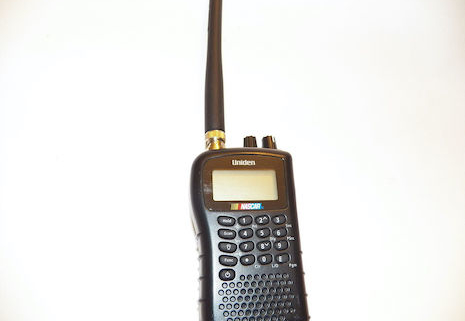




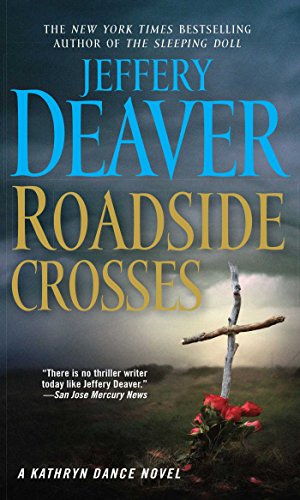

 Prior to his testimony Lawbreaker appeared confident and even occasionally smiled at jury members, the arresting officers, and the DA. After the prosecutor finished her opening statement Lawbreaker, having waived his right to an attorney, was representing himself, stood an addressed the court by saying, “Your Honor, I’d like for you to dismiss all charges because the officers never read me my rights, and the law states that they must. They violated my constitutional rights. Thank you.”
Prior to his testimony Lawbreaker appeared confident and even occasionally smiled at jury members, the arresting officers, and the DA. After the prosecutor finished her opening statement Lawbreaker, having waived his right to an attorney, was representing himself, stood an addressed the court by saying, “Your Honor, I’d like for you to dismiss all charges because the officers never read me my rights, and the law states that they must. They violated my constitutional rights. Thank you.”
